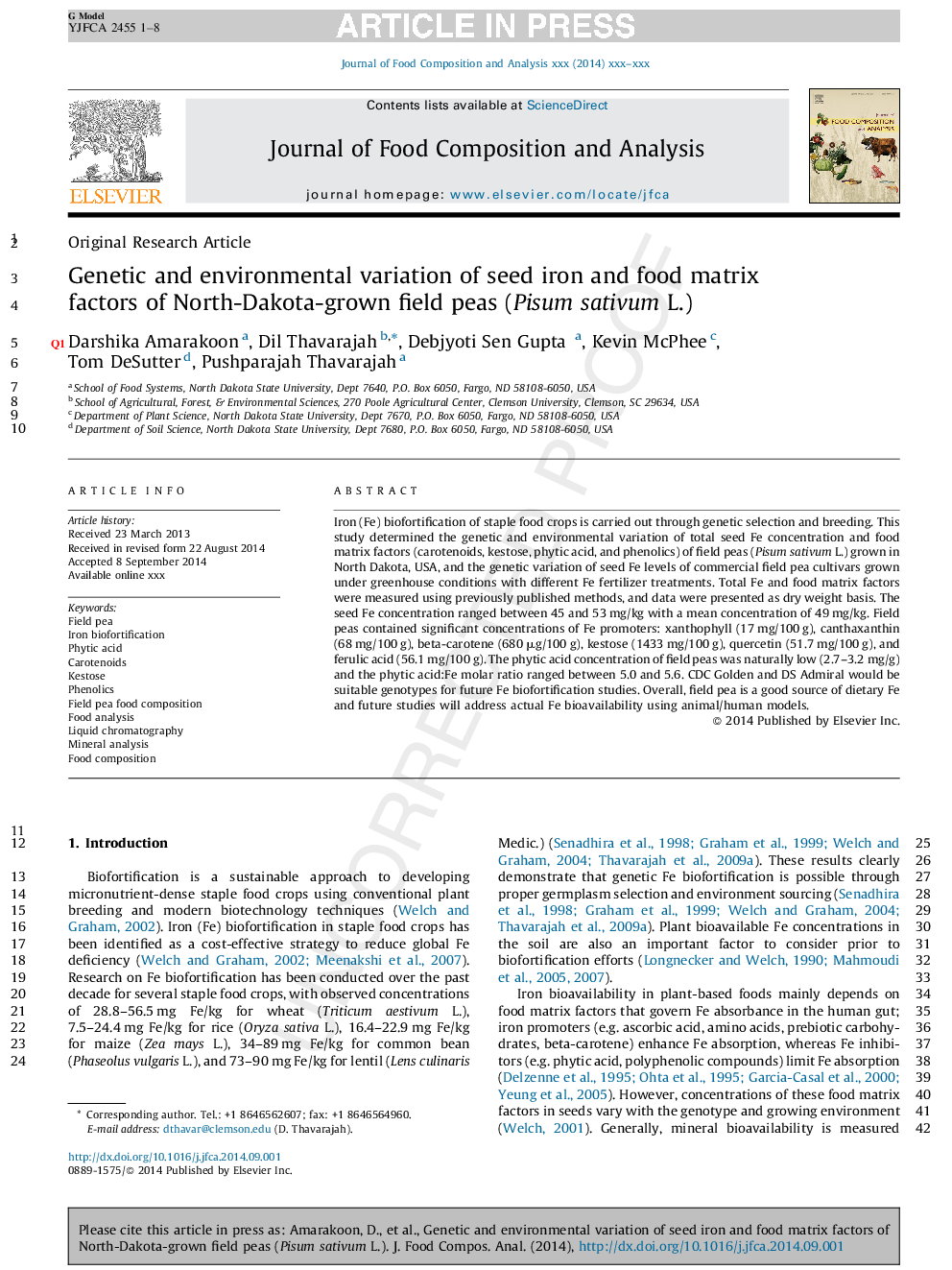| Article ID | Journal | Published Year | Pages | File Type |
|---|---|---|---|---|
| 7620672 | Journal of Food Composition and Analysis | 2015 | 8 Pages |
Abstract
Iron (Fe) biofortification of staple food crops is carried out through genetic selection and breeding. This study determined the genetic and environmental variation of total seed Fe concentration and food matrix factors (carotenoids, kestose, phytic acid, and phenolics) of field peas (Pisum sativum L.) grown in North Dakota, USA, and the genetic variation of seed Fe levels of commercial field pea cultivars grown under greenhouse conditions with different Fe fertilizer treatments. Total Fe and food matrix factors were measured using previously published methods, and data were presented as dry weight basis. The seed Fe concentration ranged between 45 and 53 mg/kg with a mean concentration of 49 mg/kg. Field peas contained significant concentrations of Fe promoters: xanthophyll (17 mg/100 g), canthaxanthin (68 mg/100 g), beta-carotene (680 μg/100 g), kestose (1433 mg/100 g), quercetin (51.7 mg/100 g), and ferulic acid (56.1 mg/100 g). The phytic acid concentration of field peas was naturally low (2.7-3.2 mg/g) and the phytic acid:Fe molar ratio ranged between 5.0 and 5.6. CDC Golden and DS Admiral would be suitable genotypes for future Fe biofortification studies. Overall, field pea is a good source of dietary Fe and future studies will address actual Fe bioavailability using animal/human models.
Keywords
Related Topics
Physical Sciences and Engineering
Chemistry
Analytical Chemistry
Authors
Darshika Amarakoon, Dil Thavarajah, Debjyoti Sen Gupta, Kevin McPhee, Tom DeSutter, Pushparajah Thavarajah,
